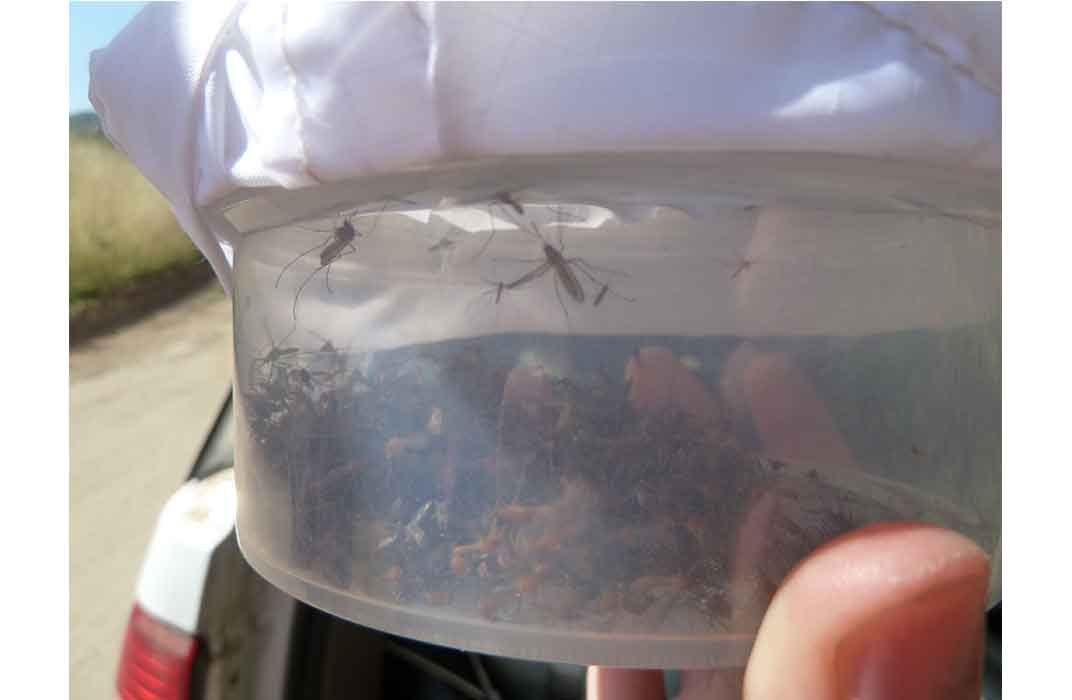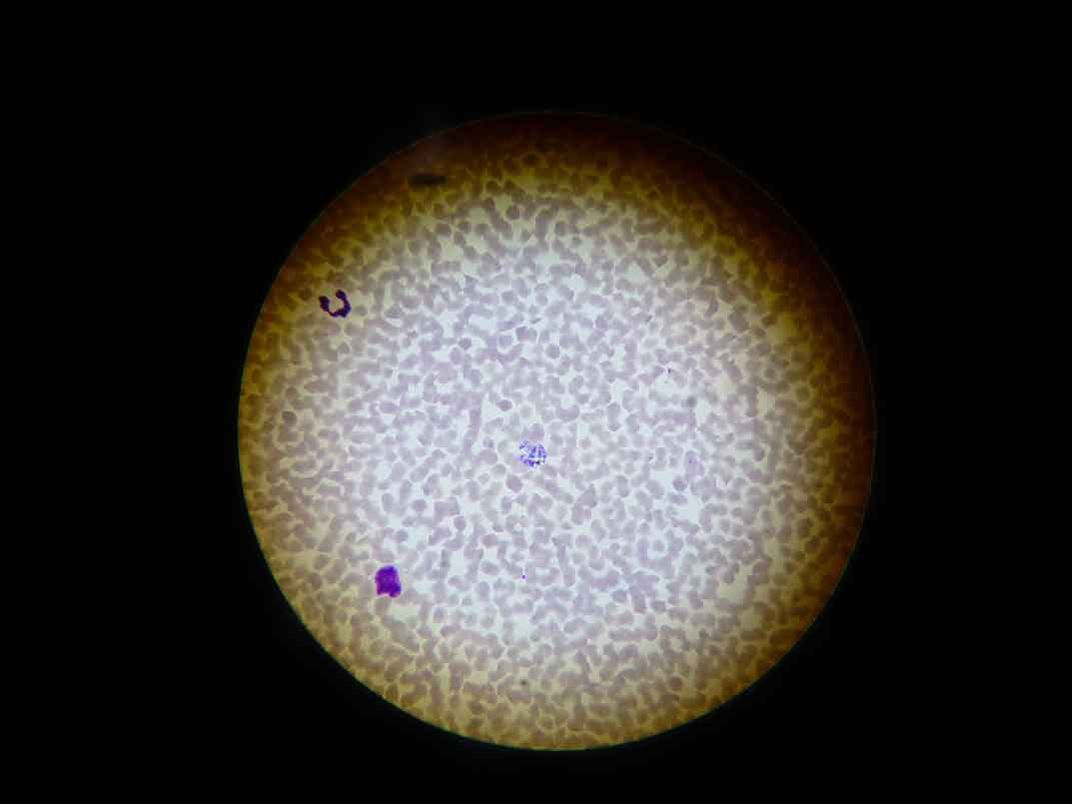One in Four U.S. Deer Is Infected With Malaria
Scientists suspect the undetected blood parasite has been present in the animals ever since they arrived across the Bering Land Bridge
/https://tf-cmsv2-smithsonianmag-media.s3.amazonaws.com/filer/54/20/542055fe-93ba-4036-936a-7cf547adc193/whitetaileddeerellenmartinsenweb.jpg)
Two new species of malaria have been discovered in Washington, D.C. by scientists at the Smithsonian's National Zoo. Previously, no type of endemic malaria was known to occur in American mammals. The newly discovered strains appear to be selectively adapted to white-tail deer and may be present in 25 percent of white-tails throughout the United States. They are unlikely to affect human health.
The discovery, described this week in Science Advances, was an accident that resulted from a survey looking for avian malaria, which is known to occur in the United States.
“What we were doing was catching and screening the mosquitoes from the Smithsonian’s National Zoo as part of a bird project,” says Ellen Martinsen, lead author of the paper and a postdoctoral fellow at the Zoo’s Center for Conservation and Evolutionary Genetics. “And we stumbled across some DNA that we didn't understand,” she says. “Fortunately one of the mosquitoes was full of blood, so we did a scan for vertebrate genes, and we found that this parasite had fed on a white-tail deer. And we knew that was something strange.”
Malaria is caused by an infection of parasitic single-celled organisms from the Plasmodium genus. There are around 200 species globally, but no form of malaria was known to exist among mammals found in the Americas. Only one poorly understood specimen of a deer with malaria was found in Texas in 1967. All forms of malaria depend on two hosts to complete their life cycle; a flying insect and a vertebrate animal.

The white-tail deer is arguably the most closely studied species of wildlife in North America. Its popularity as prey for human hunters has long meant that it drives sales of hunting licenses, which in turn provide much of the funding for conservation programs as part of the North American Model of Wildlife Conservation.
This has led both nonprofit organizations and state wildlife agencies to devote a lot of scientific resources to monitoring white-tail populations for signs of disease. But somehow, in spite of hundreds of biologists closely studying white-tails for decades, everyone missed the fact that a form of malaria has apparently been endemic among the animals all along.
“One out of every four deer that you see on your lawn or in the woods is infected with malaria,” says Martinsen. But the most common methods for looking at blood samples couldn't detect an infection at the low levels at which these new types of malaria occur. “The parasite levels in the blood are so low that they are undetectable by traditional techniques with a light microscope.”

“It sounds like they used a rather sophisticated technique to find this, and I doubt that such techniques are normally used,” says David Samuel, professor emeritus of wildlife biology and ecology at West Virginia University and the author of several books on deer. “As to the effects it may have on deer,” says Samuel, “I don't know, but my guess is very little. We've seen nothing in the wild that would indicate any effects.”
None of the deer involved in the study exhibited symptoms of illness. “There doesn't seem to be a difference in health between animals with the parasite and without,” says Robert Fleischer, co-author of the paper and head of the Center for Conservation and Evolutionary Genetics. “It may be that this is one of those benign parasites that doesn't impact the host much.”
The two species of malaria appear to have diverged from one another approximately one and a half million years ago, probably during one of the many times that groups of white-tail deer and their ancestors were geographically isolated due to glaciers or fragmented habitat. Their closest relatives among other types of malaria are Asian species that infect bats. The researchers hypothesize that the parasites traveled millions of years ago with the ancestors of white-tail deer across Beringia, a land bridge that once connected Asia and North America but that now lies under the Bering Sea.

In spite of being extremely widespread among white-tails, the researchers have not found any evidence of the diseases occurring in other species of deer or more distantly related species in North America. They tested samples from elk (whose last common ancestor with white-tails lived over ten million years ago), pronghorn (even more distantly related), as well as mule deer and blacktail deer, each of which is relatively recently descended from white-tails. No malaria was found. Testing in moose, reindeer, brocket deer and other species of deer closely related to white-tails has not taken place yet.
The mosquito survey around the Zoo documented a whopping 21 species of mosquito living in the vicinity. Only one species, Anopheles punctipennis, was found to carry the new types of malaria. While many species of mosquitoes in the District are invasive, A. punctipennis is a native species that is widespread throughout the U.S. Most species of mosquito do not carry malaria.
Humans are not likely to be affected by the parasites. “If you screened humans in areas where these are common, you might pick it up in humans,” Fleischer says. “Nobody has looked yet. If it’s getting into humans, which it probably is, it probably isn’t able to reproduce. . .We don’t know for sure, but it seems that this is not something that people need to worry about. This is not Zika virus.”
“On Zika, it highlights the importance of surveying,” says Martinsen, referring to the need to vigilantly seek out pathogens that nobody had been worrying about. “In this case we stumbled across something because we were doing a survey for a totally different species—a plain old survey, just going out in nature. We were literally turning over rocks and found this totally new parasite.”
The scientists hope to continue their research looking for malaria in other species of deer throughout North and South America. They would also like to examine the bones of deer from hundreds and thousands of years in the past to look for genetic material that could show how and when malaria evolved in the Americas. The additional work will depend on the availability of funding.
This isn't the first time that a new infectious disease has been found at a zoo. The presence of so many different types of animals from around the world requires scientists at zoos to look for unusual pathogens. “We have to maintain the health of the animals that are in our care,” says Fleischer, “which means monitoring for unknown diseases. West Nile virus was first discovered at a zoo. They are sort of a good sentinel for emerging infectious diseases.”
/https://tf-cmsv2-smithsonianmag-media.s3.amazonaws.com/accounts/headshot/JacksonLanders.jpg)
/https://tf-cmsv2-smithsonianmag-media.s3.amazonaws.com/accounts/headshot/JacksonLanders.jpg)